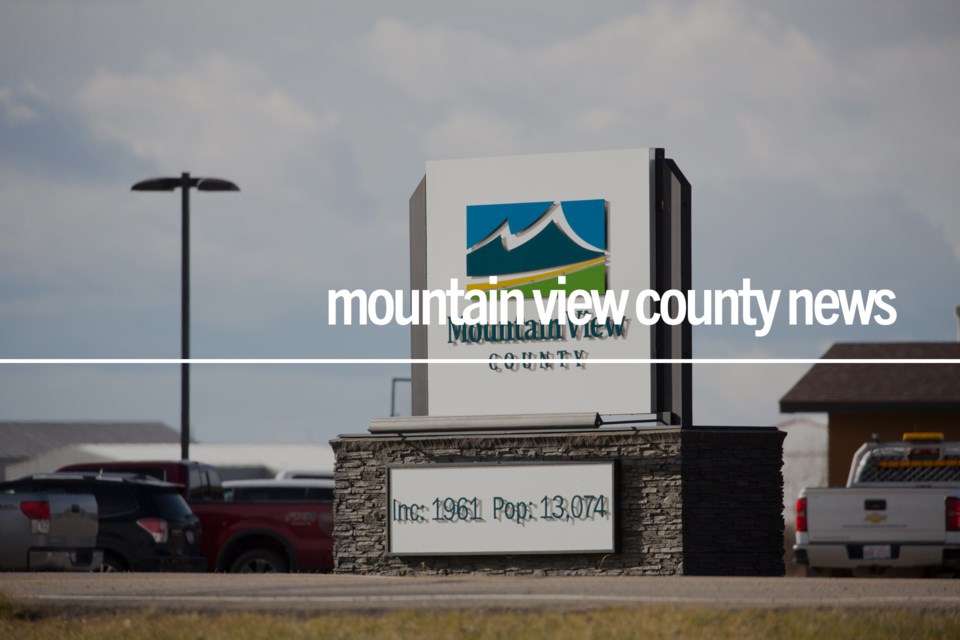MOUNTAIN VIEW COUNTY - Central Alberta Economic Partnership (CAEP) officials have updated council on the organization’s recent activities and initiatives, including plans to host a major investor summit in April.
Executive director Tracy Gardner appeared before council as a delegation during the Feb. 14 council meeting, held in person and online.
CAEP promotes and supports business activities in the district. The organization currently has 35 municipality members and 29 associate members.
Mountain View County (MVC) is a past member of CAEP, having left the organization in 2018.
CAEP will be hosting a delegation summit April 22 - 26 in Olds where 25 to 30 investors from India will be attending to look at agriculture technology, manufacturing and aerospace as areas of interest for investment, she said.
“We want to make sure our entire CAEP region is involved in those initiatives,” Gardner said.
CAEP’s 2022-2027 strategic plan focuses on labour market sustainability and growth, including providing educational and networking opportunities and facilitating the attraction of skilled workers, she said.
“We are focused on economic vibrancy, membership engagement and regional collaboration. Those are the three guiding principals,” she said.
Another goal of the strategic plan is regional orientation and advancement, including fostering increased collaboration with Indigenous nations, encouraging investment-ready processes and practices, and facilitating target industry cluster development for regional benefit, she said.
Work is underway to establish a new brand for CAEP members, she said.
“This is being done in the design of a new website that is nearly ready to go,” she said.
“Our CAEP website right now is a little bit wordy and it's very difficult to navigate on a phone and we are trying to get a little more relevant information that is timely.”
Current CAEP priorities include community profiles focused on readiness complete with data visualizations for business expansion and attraction, she said.
Another priority is committee engagement, including regarding agribusiness, emerging technology, manufacturing and natural resources, transportation and logistics, and tourism, she said.
CAEP projects now underway include business support network workshops and workforce development, she said.
In response to a question from Coun. Alan Miller, Gardner explained that CAEP is one of nine regional economic development alliances (REDAs) in the province.
“They are strategically regions around the province with typically a major city as part of an anchor of their membership, their population and their geographic land base,” Gardner said.
CAEP’s region includes Clearwater, Mountain View and Starland counties, she said, noting the REDAs help seek out provincial and federal funding for economic development initiatives.
Reeve Angela Aalbers asked Gardner how CAEP plans to support rural communities in the region.
“Our new CAEP chair, Jean Barkley, mayor of Innisfail, is very committed to ensure that rural municipalities have a little bit bigger voice,” Garner said. “The rural voice is every bit as important as the rural one.”
She added, “If there was a regional airport initiative that CAEP could advocate for for the entire membership that has regional airports, that would be a terrific opportunity to bring people together or to sit at the table to provide any leverage that we could as well.”
Coun. Gord Krebs said it is important to provide housing for any new workers that come to the region.
Gardner replied that CAEP is working with government officials on the housing issue and will continue to do so.
The organization also plans to work closing with provincial government ministries to promote the region economic wellbeing, she said.
In 2017 MVC council passed a motion giving one-year notice to terminate the county’s membership in CAEP, with then-councillor Angela Aalbers saying during the motion deliberations that, “I think it is a great organization and the fundamentals of it and what it is trying to do are good, but I just think they need to revisit the way that they communicate with their members and how they support their membership.”
Council accepted the Feb. 14 CAEP delegation appearance as information.
Councillors also passed a second motion directing administration to “bring back information on economic development, specifically to rejoining CAEP, at the next strategic planning session.”
Following the Feb. 14 council meeting, reeve Aalbers told the Albertan: “Council will evaluate the value of the membership if we were to rejoin. The cost of the membership, we were told, is $0.70 per capita.
“Council left CAEP (in 2018) because, at the time, the council of the day felt that CAEP was too urban focused and their rural membership were not getting sufficient value to justify the membership expense.”
The CAEP presentation on Feb. 14 was “enough to cause council to revisit CAEP and the potential value this organization could have on our economic development strategy,” she said.
In 2017 the county’s annual membership fee in CAEP was $5,229.60 calculated at 40 cents per capita.



